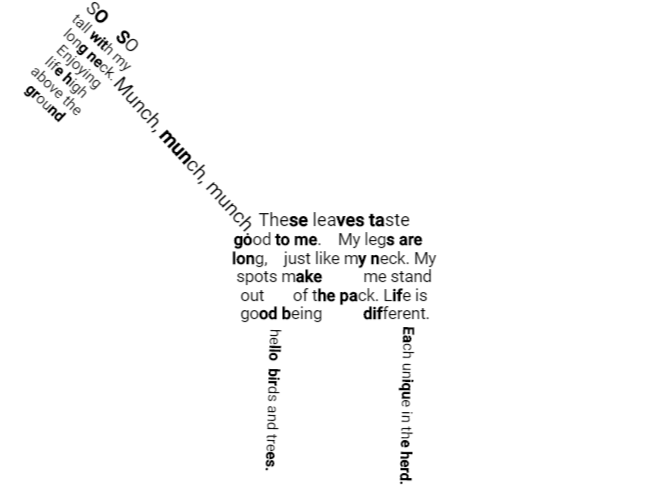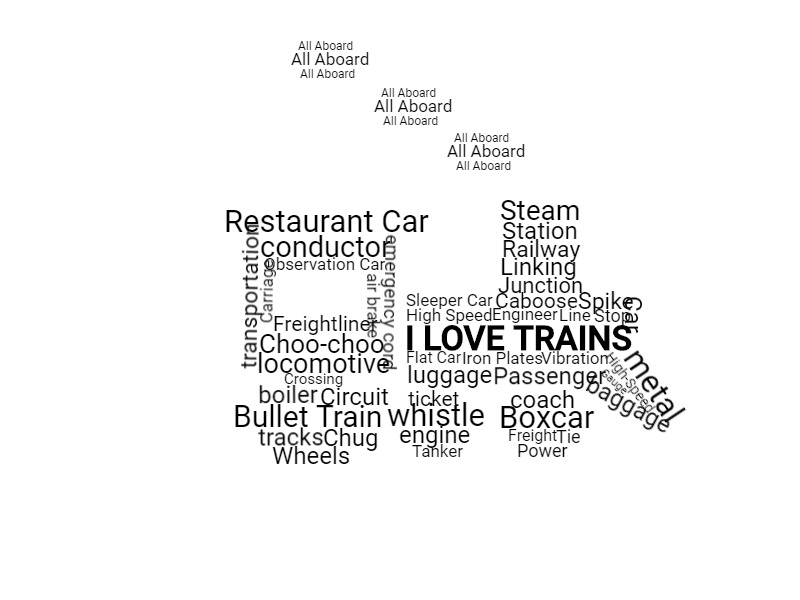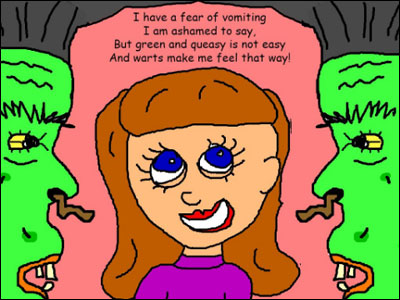

Eight ideas where digital tools make exploring and writing poetry easier, more engaging, and equally powerful.
Most elementary students write a diamante poem, where the combination of adjectives and -ing words are designed to form a diamond shape when written out on seven lines.
In a concrete poem, there are no rules about lines, syllables, and rhyme, what make it a concrete poem is the way the words are arranged to reflect the topic.

Because digital creativity, presentation, and productivity tools let you resize, move, and rotate text easily, they make it easy to move text to create a desired shape.

Ask students to write a poem in small phrases or stanzas. Then, use the font, size, color and rotation options to use it to create a larger image.
In addition to reinforcing scientific observation, engaging the five senses is a great way to help young learners add descriptions to their writing and practice vocabulary.
If your learners would benefit from a little direction, provide a specific topic for their poem.
Explore a 5 Senses Poetry lesson plan
To write a blackout poem, words on a page are covered until the remaining words form a poem. Using a digital approach means you don't have to pay for or destroy printed books.
Use a paint program to add a section of text from a favorite poem or book you are reading.
Press the Play button
Read the text and circle words you find interesting, then read them in order to listen to your poem. Circle additional words to fill out the idea and blackout (or pink-out, as the case may be) the rest of the words and add additional painted decoration.
Visual versions of poems are great performance tasks that require close reading. Have students use a digital publishing tool to type a poem from their favorite poet or one they may have written. Add illustrations and voice recordings to help the reader and viewer better understand and connect with the poem.
Explore a Visual Poetry lesson plan
Ask students to write a funny, or fractured, version of their favorite nursery rhyme. Challenge them to follow rhyme and rhythm patterns!
Read "The End" a poem by A. A. Milne, who you know from Winnie the Pooh.
When I was One,
I had just begun.
When I was Two,
I was nearly new.
When I was Three
I was hardly me.
When I was Four,
I was not much more.
When I was Five,
I was just alive.
But now I am Six,
I'm as clever as clever,
So I think I'll be six now for ever and ever.
Use a "When I was (age)" template and have students finish each line and illustrate their poem.
Combine close reading and descriptive writing with visual haiku. Haiku poems are a 17-syllable verse form consisting of three metrical units of 5, 7, and 5 syllables. This spare form of writing forces students to choose words wisely.
Haiku also contain a kigo (season word) to indicate the time of year. Share example of haiku with students and have them read closely to find the kigo word, as well as identify other highly descriptive words.

Have students start with a photo as inspiration or write first and add visuals to enhance the meaning.
Combine their finished work into a book.
If you upload images of their work to a photo sharing site, you can even publish a book families can purchase.
Explore a Harmonious Haiku lesson plan
Inform students about surrealism. You might inspire them by reading a book like Pish, Posh, Hieronymus Bosch.
Have students use paint tools to illustrate bizarre creatures juxtaposed around a normal self-portrait and then write a poem about the way the surrealism makes them feel.

This example takes advantage of the mirror symmetry options for the paint brush in Wixie.
Explore a Surreal Symmetry lesson plan
Once they have experience with a few digital poetry projects, let students choose the way they want to engage with a poem or poetry writing.

Follow us on Instagram for daily inspiration

Create a thought web, timeline, flowchart, or other graphic organizer for a lesson


Wixie
Share your ideas, imagination, and understanding through writing, art, voice, and video.

Rubric Maker
Create custom rubrics for your classroom.

Pics4Learning
A curated, copyright-friendly image library that is safe and free for education.

Wriddle
Write, record, and illustrate a sentence.
Topics